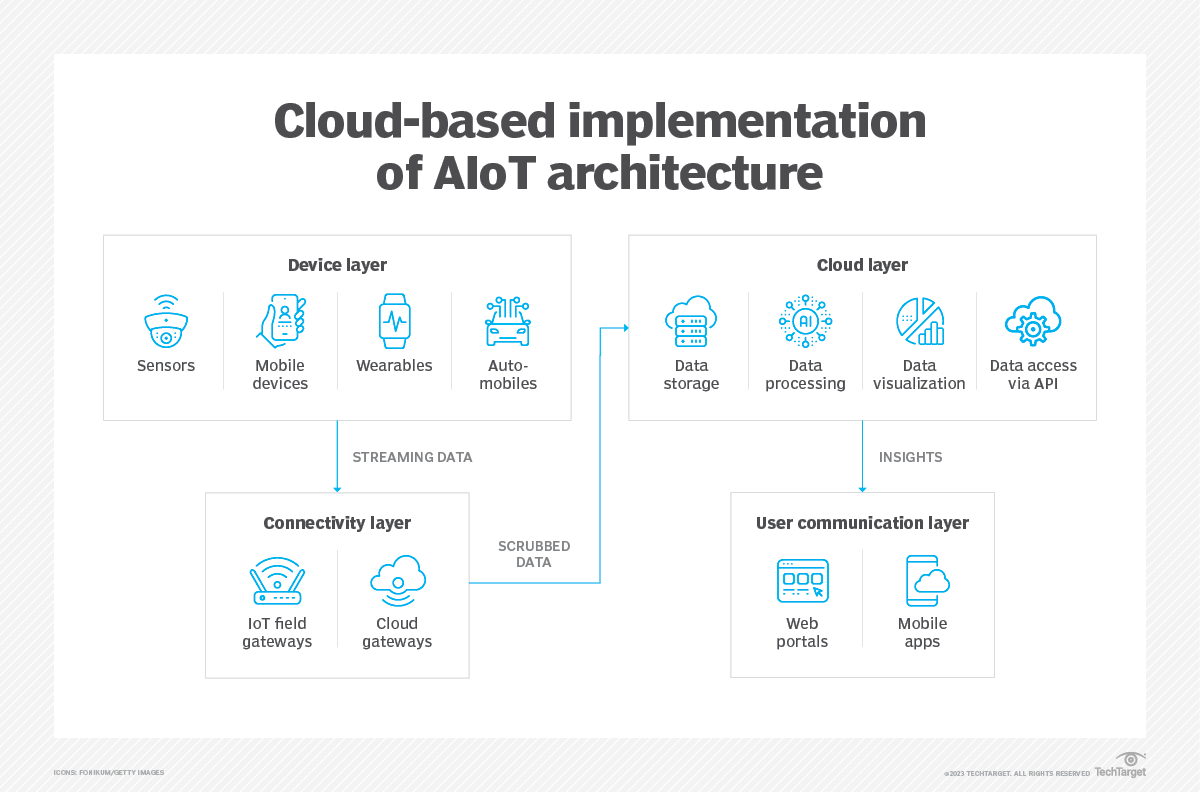Artificial Intelligence of Things (AIoT)

Artificial Intelligence of Things (AIoT) is a fusion of artificial intelligence (AI) and the Internet of Things (IoT) infrastructure, aimed at enhancing the efficiency of IoT systems, improving human-machine interactions, and refining data management and analytics. AI refers to the process by which machines simulate human intelligence, commonly applied in tasks like natural language processing, speech recognition, and machine vision. IoT, on the other hand, involves a network of devices that can connect, share, and transfer data over the internet without requiring human-to-human or human-to-computer interaction. Examples include sensors in vehicles or wearable health devices that send data to a network for analysis.
In AIoT, AI is embedded into the infrastructure of IoT devices, including software and hardware components like chipsets, with devices interconnected through IoT networks. These devices generate and collect data, which is then analyzed by AI systems to derive actionable insights that can improve operational efficiency and productivity. The integration of AI with IoT can take place either in the cloud, where data is processed and stored on centralized platforms, or at the edge, where data is processed closer to the devices to minimize bandwidth use and potential delays.
AIoT systems operate through several layers, whether cloud-based or edge-based. In cloud-based AIoT, data is managed through layers such as the device layer, connectivity layer, cloud layer, and user communication layer. These components work together to ensure seamless data processing and interaction across different devices and applications. On the other hand, edge-based AIoT minimizes data transmission by processing data near the source, enhancing efficiency and reducing potential delays. Both configurations contribute to applications ranging from smart cities and retail to healthcare, autonomous vehicles, and industrial automation.
While AIoT offers numerous benefits, such as increased operational efficiency, enhanced security, and personalized experiences, it also presents challenges. These include cybersecurity risks, the complexity of integrating IoT and AI, and the high costs associated with implementing such systems. Data management concerns and privacy issues also arise, especially regarding the vast amounts of data collected by AIoT devices. As AI and IoT continue to evolve, the future of AIoT holds promise in areas like edge computing, 5G technology, and computer vision, which are expected to drive even greater efficiency and innovation across industries.
source: https://www.techtarget.com/iotagenda/definition/Artificial-Intelligence-of-Things-AIoT